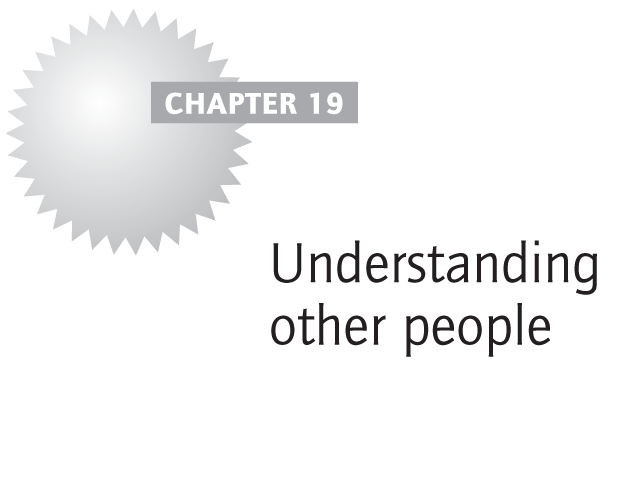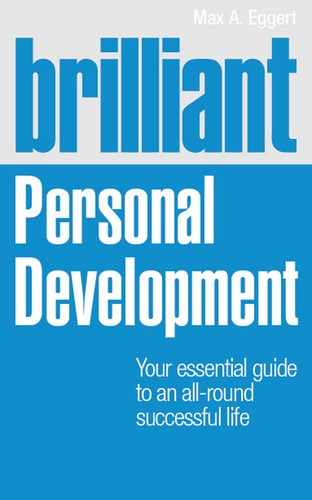
‘Treat others as you would treat yourself’ is a fine sentiment, for we would all like to be treated with kindness, respect and generosity. However, at a deeper level, this golden rule needs to have several corollaries because we are not all the same. Whether we are male, female, short, tall, introvert, extrovert, we are all absolutely unique. Even identical twins brought up in exactly the same way are not 100% identical.
It is this real individuality that brings with it both joys and difficulties, and presents a multitude of challenges when we try to work with and understand other people, particularly in the areas of influence and persuasion. For example, supposing someone’s disposition is kind and helpful, and their default position is being accommodating and supportive, then one of the ways to approach them for help with your career, after an initial rapport discussion, would go something like this:
‘I’m doing some work on myself to develop new competences so I can have a shot at a promotion – but I’ve hit a bit of a roadblock. I’d really like to talk through what I am doing, get some feedback and even advice. I wonder if you would be kind enough to be my mentor and help me though the process?’
Somehow I don’t think this approach would work with someone who is highly individualistic, competitive and hungry for power. This person would probably be more influenced by a more direct approach with the possibility to shine as a result of assisting you, with a pinch of competition thrown in. One of the better approaches, after the initial rapport discussion, would go something like this:
‘Doug in HR has suggested that I approach Sam Pringle to mentor me. I’m not sure if mentoring is something you generally do, but I’d really prefer to work with you – you have a excellent reputation for getting things done and I like your direct style. It is a big ask, but the CEO is very keen for people like myself to develop ourselves as much as possible and I’m sure he would take an interest. Please don’t feel obliged as I could approach Sam, as suggested, but, in confidence, I feel you would be the better person.’
The way that I have phrased these requests may not be your style, but what is obvious is that both approaches have taken into consideration the individual, their disposition and personal style. So we are turning the original maxim on it head: your approach is more likely to be successful if you abide by the rule:
 | ‘Treat other people as they would like to be treated.’ |
Then they are more likely to be persuaded. If this doesn’t work then here are some basic maxims with which to play. First of all:
 | ‘The more you do of what you’re doing, the more you get of what you’ve got.’ |
If what you’re doing is not working then the second maxim comes into play:
 | ‘If what you are doing is not working then do something different.’ |
 | ‘The person with the greatest flexibility will win in every interpersonal situation.’ |
If this does not sound credible then think of very young babies. When they want something they smile, babble, cry, scream, hold their breath, go blue, defecate, kick their legs, wave their arms until they get what they want. Why? It’s as if they are already familiar with and use the third maxim to communicate and control two adults to get what they want.
Discovering the difference in people
As an analogy, think of sports people: for example, David Beckham, the footballer, and Rebecca Adlington, the Olympic swimmer. These tremendous athletes enjoy the right body shape for their sport. All of us have personality ‘shapes’ and this becomes very important when we need to persuade an individual to do something. The best indicator of future behaviour is past behaviour, so even just thinking about a person’s behaviour in the past will help you in your day-to-day interactions with them.
The MBTI
Perhaps the most widely used tool to illustrate how we are different is based on the work of Carl Jung. Essentially it is a four-by-four matrix system (interestingly not developed by psychologists but by an anthropologist and her daughter). The questionnaire is known as the Myers-Briggs Type Indicator® or MBTI. What is so powerful about this instrument is that the 434 matrix suggests that there are 16 different personality types. This might sound complex at first but once you have grasped the basics it becomes obvious.
The MBTI structure asserts that we are all either:
- Extrovert or Introvert
- Intuitive or Sensor
- Thinker or Feeler
- Judger or Perceiver.
To give you a flavour of the system, we will look at just two of those categories (Thinkers and Feelers, and Judgers and Perceivers) using the examples of how people make decisions and, by extension, how they like to be persuaded.
Thinkers (T) and Feelers (F)
Thinkers are logical, analytical and firm minded. In other words they use their heads to make most of their decisions. Some people known as ‘Feelers’ prefer to use another strategy when faced with a decision and are more comfortable using their heart and/or their value system to come to a conclusion. By and large their decisions are more humane, empathetic and tender hearted.
Judgers (J) and Perceivers (P)
Judgers tend to be controlled, disciplined and organised in their lives. Perceivers are more spontaneous and free spirited – preferring to wait and see what the future brings before making a decision, which to them is far more appealing than having a firm plan of operation. Judgers like closure and completion so that they can move on whereas Perceivers like decisions made as late as possible in case there is a new circumstance or opportunity just around the corner.
As you can see, should an extreme TJ person treat someone with an extreme FP personality in the same way that they themselves like to be influenced and persuaded, they will be like two ships passing each other at night in deep fog with neither vessel having the advantage of semaphore let alone radar. Logical, factual and realistic, the TJ person will bombard the FP person with logic in an effort to persuade them and will be surprised that their best efforts are to no avail, no matter how much they cry ‘How can’t you see! It is so logical! We have to do it this way!’ Maybe if they had said ‘How do you feel about this? Isn’t it just right for this occasion? But hey, I don’t want to rush you, tell me how you feel about it in the morning’, they would have been more successful. Here we take a more emotional stance and give the other person time to consider all their options, leaving things open until the last nanosecond.
Important note: psychological boxes of people’s personalities just go some way to helping us understand someone, but it’s very important to remember that an individual is too unique to be caged in one of 16 boxes. We are all individuals and like no other person on earth either living or dead. These boxes are convenient but they are only constructs, not reality.
Many years ago I was invited by a major retail company to help the board of directors work better together and act like a cohesive team. The problem was easy to identify in that there were two categories of board member: those who had come up through the ranks (mostly ‘Ps’) and those who were professionals with lots of qualifications (mostly ‘Ts’). One director, who joined the organisation as a sales assistant and worked his way up to being a director, went to the heart of the problem, telling me in no uncertain terms: ‘Look mate, a brilliant retailer is someone who hasn’t got an MBA and can sell stuff.’
You can use your imagination about the views his qualified colleagues (who were all ‘Ts’), who had MBAs but had spent no time on the retail floor, held about him!
Examining differences
To be successful in life, it’s important to get on with other people. Unfortunately, not everyone is easy to deal with and some individuals can be exceptionally difficult. One of the reasons why you perceive them as difficult is that you have not taken the time to understand them. You may remember from the musical My Fair Lady that Professor Henry Higgins get so frustrated with the flower girl Eliza Doolittle that he shouts at his colleague Colonel Pickering, ‘Why can’t a woman be more like a man?’ Like most of us, the Professor expects everyone to have the same approach to others as he has. But of course this is impossible, since we are all so different one from another.
An easy way of understanding other people is simply to take some time to watch and listen, particularly when you are having difficulties with someone. But before you do this, spend some time reflecting on your own disposition and personality. Check out your thoughts with someone who knows you well. This will help you discover how you are different from other people and they from you.

It would be to your advantage to swat up on the MBTI. Spend half an hour or so reading some of the excellent summaries of the work of Katharine Cook Briggs and her daughter Isabel Briggs Myers on the internet. Just Google MBTI and consider where your personality lies in the matrix.
Think about someone who you have difficulties communicating with. You have already noticed that their behaviour and preferences are different to yours so the next stage is to discover what drives their behaviour. Remember they are not being deliberately difficult, they just march to a different drum and you need to discover their beat.
It’s also important to recognise your hot buttons and triggers: what is it about this person that ‘gets under your skin’? Once you understand these triggers and what makes the other person ‘tick’ you’re pretty much there in terms of communicating better with them and overcoming your differences.
 | ‘When we lose the right to be different, we lose the privilege to be free.’ Charles Evans Hughes, American statesman, lawyer and Republican politician |
 | ‘If we are to live together in peace, we must come to know each other better.’ Lyndon Johnson, 36th US President |
Questions to understand another person
Choose someone you find challenging to communicate with and work through the questions below. You might not be able to answer all of them but the process will certainly help you towards a better understanding of them and should improve your relationship.
- What is it about this person that I like?
- What is it about this person that I dislike?
- What do I know about this person from their past behaviour?
- What could be their Myers-Briggs® type personality?
- What are their likes and dislikes?
- How are they different from me?
- What do I like about them as an individual? Why?
- What do I dislike about them as an individual? Why?
- What do we agree about?
- What do we disagree about?
- What do they appear to believe in?
- What are their values?
- What three adjectives would describe this person?
- What evidence do I have for this?
Now you have this information, how might you work differently with them in the future?
- _____________________________
- _____________________________
- _____________________________
- _____________________________
- _____________________________

- We are all different and unique.
- We need to be flexible and adapt to differences in others.
- The Myers-Briggs matrix helps us discover and understand differences in other people and ourselves.
- Identifying our ‘hot buttons’ allows us to stay in control and communicate better with others.
